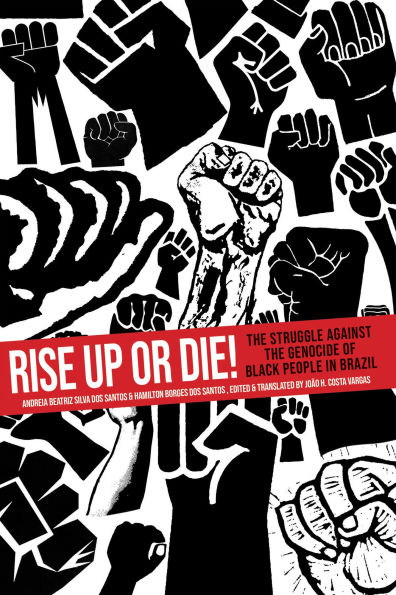Rise Up or Die! describes the origins, main concepts, distinct phases, and visions of the future of one of the most innovative, daring, and militant Black organizations in Brazil. Firmly rooted in that country’s long tradition of resistance and rebellion against a nation that depends on the continued hyper-exploitation, dehumanization, abandonment, and social and physical death of Black people, the organization invented what it refers to as “bad manners in Black politics.” If bad manners mean a refusal to abide by expectations of decorum, analysis, collective organization—and indeed the Brazilian genocidal model of racial democracy—then Rise Up certainly fits the description. The organization invented a new political vocabulary, led to the formation of an autonomous Black School in Salvador (the Winnie Mandela School), and constantly attracts people from the most marginalized Black spaces of the largest Black nation in the world, second only to Nigeria.
Drawing on a constantly replenished matrix of Black radical traditions, the activists of Rise Up or Die relentlessly pursue invention as the necessary alternative to a social formation that simply hates Black people.
Rise Up or Die! describes the origins, main concepts, distinct phases, and visions of the future of one of the most innovative, daring, and militant Black organizations in Brazil. Firmly rooted in that country’s long tradition of resistance and rebellion against a nation that depends on the continued hyper-exploitation, dehumanization, abandonment, and social and physical death of Black people, the organization invented what it refers to as “bad manners in Black politics.” If bad manners mean a refusal to abide by expectations of decorum, analysis, collective organization—and indeed the Brazilian genocidal model of racial democracy—then Rise Up certainly fits the description. The organization invented a new political vocabulary, led to the formation of an autonomous Black School in Salvador (the Winnie Mandela School), and constantly attracts people from the most marginalized Black spaces of the largest Black nation in the world, second only to Nigeria.
Drawing on a constantly replenished matrix of Black radical traditions, the activists of Rise Up or Die relentlessly pursue invention as the necessary alternative to a social formation that simply hates Black people.

Rise Up or Die!: The Struggle Against the Genocide of Black People in Brazil
240
Rise Up or Die!: The Struggle Against the Genocide of Black People in Brazil
240Paperback

Product Details
| ISBN-13: | 9781945335280 |
|---|---|
| Publisher: | Common Notions |
| Publication date: | 08/05/2025 |
| Pages: | 240 |
| Product dimensions: | 6.00(w) x 9.00(h) x (d) |
